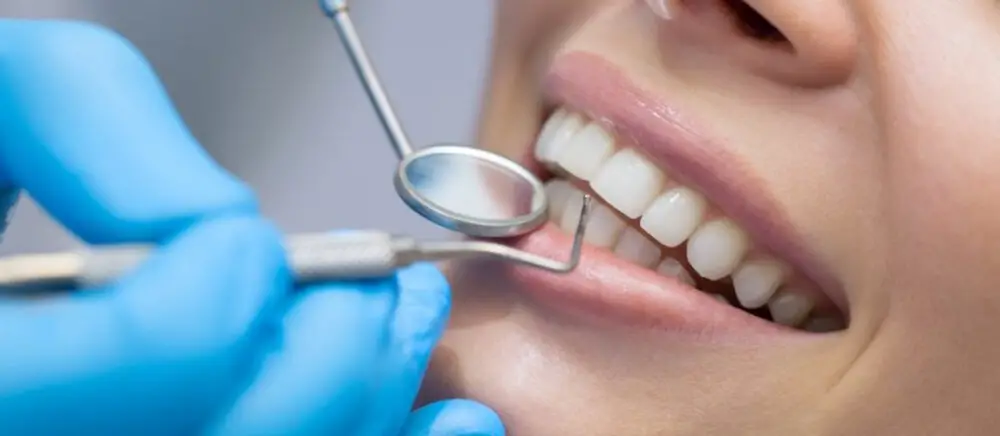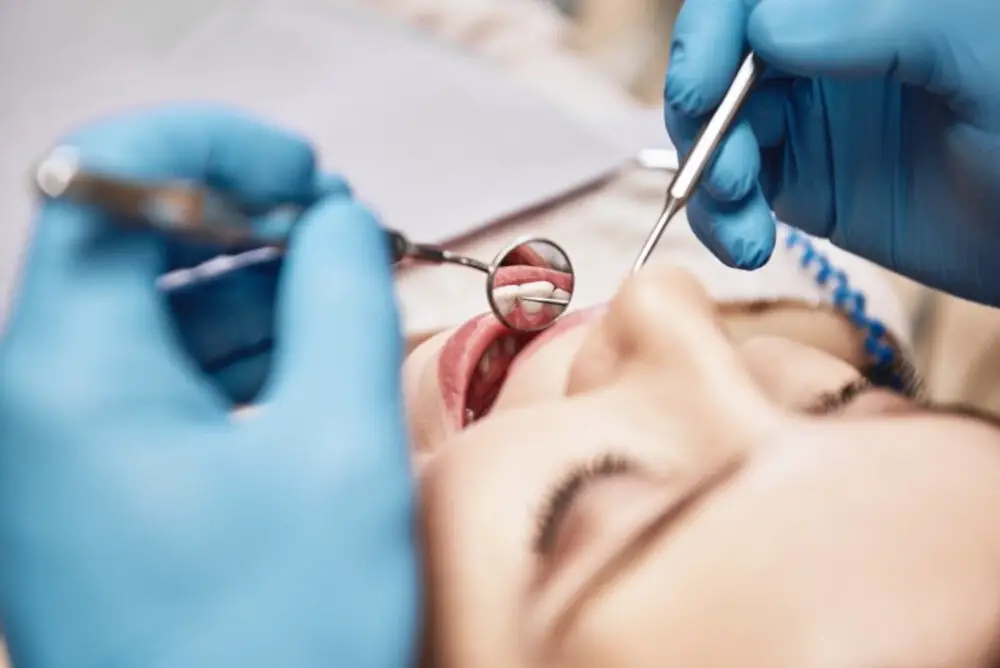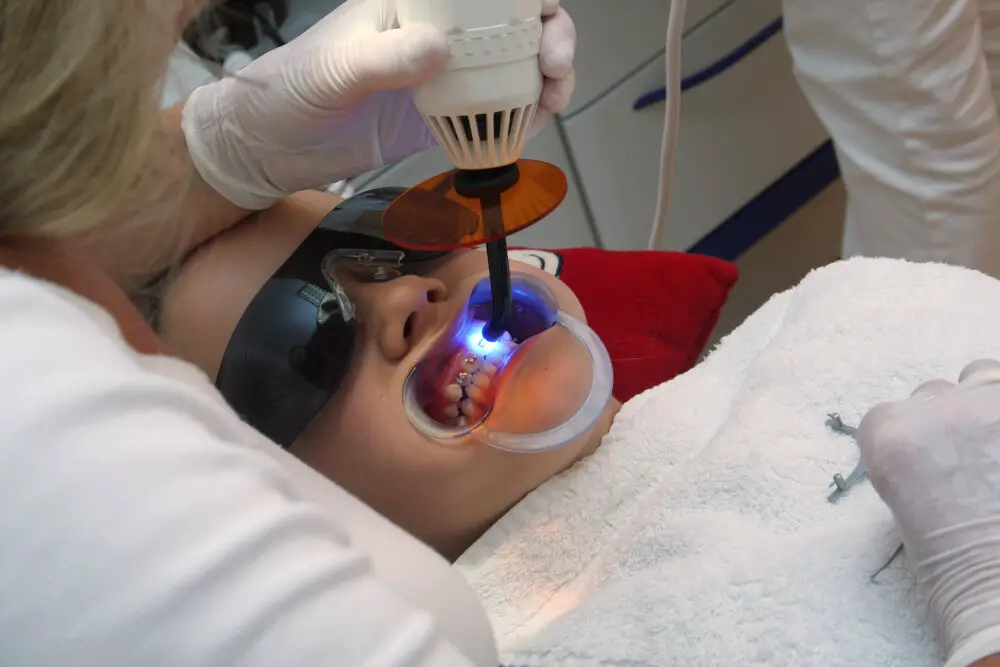Expert Advice: How Long to Wear Gauze After Wisdom Teeth Removal for Optimal Healing

Wisdom teeth removal is a common dental procedure that many people undergo to relieve pain, prevent infections, and improve their oral health. It involves the extraction of one or more wisdom teeth, which are the last molars in the back of the mouth. After the procedure, patients are typically instructed to wear gauze over the extraction site to help control bleeding and aid in the healing process. However, many patients are unsure of how long they should wear gauze after wisdom teeth removal for optimal healing and what factors can affect the healing process. To answer these questions, it’s important to understand the basics of wisdom teeth extraction and the factors that can influence healing. Wisdom teeth extraction is a surgical procedure that involves cutting through the gum tissue and removing the tooth from its socket in the bone. After the tooth is removed, the socket may bleed for a period of time, and the gauze helps to absorb the blood and promote clotting. The length of time that gauze should be worn after wisdom teeth removal can vary depending on several factors, such as the number of teeth extracted, the extent of the surgery, the patient’s age and overall health, and the medications prescribed by the dentist or oral surgeon.
Wisdom teeth removal is a common dental procedure that aims to eliminate wisdom teeth, also known as third molars, which often cause a range of dental problems. The process typically begins with the administration of local anesthesia to numb the area and minimize discomfort during the surgery. The dentist or oral surgeon then creates an incision in the gum tissue to access the tooth and remove it from the socket. In some cases, the tooth is broken into smaller pieces to facilitate its removal. After the tooth is extracted, the surgeon will place gauze over the area to control bleeding and promote clotting. Patients may experience some swelling and discomfort, but these symptoms can be managed with pain medication and ice packs. Understanding the wisdom teeth removal procedure can help patients prepare for the surgery and take appropriate steps for optimal healing.
Proper aftercare is crucial after any medical procedure, especially after wisdom teeth removal. It involves taking the necessary steps to ensure optimal healing, reduce the risk of complications, and promote overall well-being. Proper aftercare may include following a specific diet, taking medication as prescribed, using ice packs to reduce swelling, avoiding smoking or drinking alcohol, and keeping the surgical site clean. Neglecting proper aftercare can result in prolonged healing time, increased pain and discomfort, infection, and other complications. Therefore, it is essential to follow your dentist’s instructions for aftercare to ensure a smooth recovery and minimize any potential risks.
Why Gauze is Used After Wisdom Teeth Removal

After wisdom teeth removal, gauze is used to control bleeding and promote clotting. This is a crucial step in the healing process, as any bleeding can prolong recovery time and increase the risk of infection. Gauze is placed over the extraction site and pressure is applied by biting down on it. This pressure helps to form a clot, which seals the wound and prevents further bleeding. The gauze should be changed regularly, usually every 30-45 minutes, until bleeding has stopped. It’s important to follow your dentist’s instructions regarding how long to wear gauze, as this can vary depending on the extent of the extraction and your individual healing process. In addition to controlling bleeding, gauze can also help to reduce swelling and discomfort after wisdom teeth removal. Placing a cold pack over the gauze can provide additional relief by numbing the area and reducing inflammation. It’s important to avoid using heat, as this can increase swelling and prolong the healing process. Overall, using gauze after wisdom teeth removal is an important step in ensuring optimal healing and a smooth recovery. By following your dentist’s instructions and being diligent about changing the gauze regularly, you can help to prevent complications and ensure a successful outcome.
Gauze is a medical material that is commonly used after dental procedures, including wisdom teeth removal. It is made from cotton or a combination of cotton and rayon, and its primary purpose is to control bleeding and promote healing. Gauze is placed over the surgical site and held in place by biting down. Its absorbent nature allows it to soak up any blood or saliva that may be present, preventing infection and ensuring that the area remains clean. Additionally, gauze provides a protective barrier that helps to prevent food particles and debris from entering the wound, which could cause complications. Overall, gauze is an important tool in the healing process after wisdom teeth removal and plays a crucial role in ensuring optimal recovery.
Keeping the extraction site clean and dry is crucial for optimal healing after wisdom teeth removal. Failure to do so can lead to infections, delayed healing, and other complications. During the first few days after the procedure, it’s important to avoid rinsing or spitting forcefully, as this can dislodge the blood clot that forms in the socket and increase the risk of dry socket. Instead, patients are advised to gently rinse their mouth with saltwater or prescribed mouthwash, and use clean gauze to absorb any excess saliva or blood. Additionally, avoiding smoking, drinking through a straw, or consuming hard or sticky foods can also help prevent complications and promote faster healing. By following these simple yet crucial steps, patients can ensure a smooth and successful recovery after wisdom teeth removal.
Gauze is a crucial element in the healing process after a wisdom tooth extraction. It helps to control bleeding by providing pressure on the treated area, which promotes the formation of a blood clot. The blood clot forms a protective barrier over the wound, preventing bacteria from entering and reducing the risk of infection. Additionally, gauze helps to absorb excess saliva and blood, reducing the potential for swelling and discomfort. It is important to follow your dentist’s instructions for how long to wear gauze after a wisdom tooth extraction to ensure optimal healing and minimize the risk of complications.
How Long to Wear Gauze After Wisdom Teeth Removal

After having your wisdom teeth removed, your dentist or oral surgeon will likely place gauze over the extraction site to help control bleeding and promote healing. It is important to follow the instructions given to you by your dental professional to ensure optimal healing. One of the most common questions asked after wisdom teeth extraction is how long to wear gauze. While this can vary depending on the individual and the extent of the extraction, a general guideline is to keep the gauze in place for about 30-45 minutes after the procedure. During this time, it is important to bite down firmly on the gauze to apply pressure to the extraction site, which will help stop the bleeding. After the initial 30-45 minute period, you can remove the gauze and discard it. If bleeding continues, you can replace the gauze with a fresh piece and bite down for an additional 30-45 minutes. It is important to avoid changing the gauze too frequently or removing it too soon, as this can disrupt the clot that is forming in the extraction site and cause further bleeding. In conclusion, wearing gauze after wisdom teeth removal is an important part of the healing process. It is recommended to keep the initial gauze in place for about 30-45 minutes, applying firm pressure to the extraction site. If bleeding continues, replace the gauze with a fresh piece and bite down for an additional 30-45 minutes. It is important to follow these guidelines and avoid changing the gauze too frequently, to ensure optimal healing and minimize the risk of complications.
Gauze is a common material used after wisdom teeth extraction to facilitate healing and prevent bleeding. Typically, patients are advised to keep the gauze in place for the first hour after surgery, biting down gently to encourage clot formation. After the first hour, patients can remove and discard the gauze, replacing it with fresh gauze every 30-60 minutes as needed until the bleeding subsides. In most cases, gauze use is discontinued after 24-48 hours, although individual healing times may vary. It is important to follow your dentist or oral surgeon’s specific instructions regarding gauze use to ensure optimal healing and minimize the risk of complications.
There are several factors that can influence the length of time that gauze is needed after wisdom teeth removal. The complexity of the extraction, the amount of bleeding, and the patient’s ability to form blood clots are all crucial factors that can affect the duration of gauze usage. Additionally, the type of anesthesia used during the procedure and the patient’s overall health and medical history may also play a role in determining how long the gauze should be worn. It is important for patients to follow their dentist’s instructions carefully and to contact their healthcare provider if they experience excessive bleeding or other complications following the extraction. By taking these factors into consideration, patients can help ensure that they heal properly and achieve optimal results following wisdom teeth removal.
Gauze is commonly used to control bleeding and promote healing after wisdom teeth removal. It’s important to know when to stop using gauze to prevent any complications. Typically, gauze can be removed after the first hour and replaced every 30-45 minutes until bleeding stops. Once bleeding has subsided, you can stop using gauze. It’s important to avoid using gauze for more than 24 hours, as this can cause dry socket, a painful condition that occurs when the blood clot in the socket becomes dislodged. If bleeding persists or you experience severe pain, consult your dentist or oral surgeon immediately.
Tips for Using Gauze After Wisdom Teeth Removal

After wisdom teeth removal, the dentist or oral surgeon will place gauze over the extraction site to control bleeding and promote clotting. It’s essential to follow the instructions provided by the dental professional for optimal healing. Here are some tips for using gauze after wisdom teeth removal: Firstly, keep the gauze in place for at least 30-45 minutes after the procedure. Change the gauze as needed (usually every 30-45 minutes) until the bleeding has stopped. It’s normal to experience some oozing or bleeding for the next 24-48 hours. If the bleeding persists or becomes heavy, contact the dental professional immediately. Avoid rinsing or spitting forcefully and stick to a soft or liquid diet for the first few days. It’s also essential to avoid smoking, drinking alcohol or using a straw for at least 24-48 hours post-surgery, as they can delay healing and increase the risk of bleeding. Secondly, make sure to use the gauze correctly. Fold the gauze to make a small square enough to fit over the extraction site. Bite down gently but firmly to apply pressure to the site. Don’t chew on the gauze or use your tongue to push it around, as this can disrupt the clotting process and cause more bleeding. When removing the gauze, do it slowly and carefully, so as not to disturb the clot. If the clot comes out, it can cause a dry socket, which can be painful and delay healing. Overall, following these tips can help promote optimal healing and reduce the risk of complications after wisdom teeth removal.
Proper gauze placement is essential for optimal healing after wisdom teeth removal. After the surgery, the dentist or oral surgeon will place gauze on the extraction site and instruct the patient to bite down gently to help stop bleeding and promote clotting. It is crucial to position the gauze correctly to ensure that it covers the extraction site and applies enough pressure to control the bleeding. The gauze should be changed regularly as directed by the dentist or oral surgeon to maintain cleanliness and promote healing. Improper placement of gauze can result in prolonging the healing process or cause additional complications. Therefore, it is crucial to follow the dentist’s instructions carefully and consult them if any issues arise.
When it comes to changing gauze after wisdom teeth removal, it’s important to follow the instructions provided by your dentist or oral surgeon. Generally, gauze should be changed every 30-45 minutes for the first few hours after surgery to control bleeding and promote clotting. After the bleeding has subsided, the frequency of gauze changes can be reduced to every 2-3 hours or as needed. It’s important to avoid leaving the same gauze in place for too long, as this can lead to infection and delay healing. Proper wound care and following your dentist’s instructions can help ensure a smooth and speedy recovery after wisdom teeth removal.
If bleeding persists after wisdom teeth removal, it is important to take immediate action to prevent further complications. First, apply pressure to the affected area using a clean gauze pad or cloth. Bite down firmly for at least 30 minutes to help promote clotting. Avoid spitting, rinsing, or sucking on straws as this can dislodge the clot and prolong bleeding. If bleeding continues after an hour or two, contact your dentist or oral surgeon for further advice. They may recommend additional treatments such as stitches or medication to help stop the bleeding and promote healing. It is essential to follow their instructions carefully to ensure optimal healing and prevent further complications.
Other Aftercare Tips for Optimal Healing

In addition to wearing gauze after wisdom teeth removal, there are other aftercare tips that can help promote optimal healing. One important tip is to avoid smoking or using any tobacco products for at least a week after the procedure. Tobacco can irritate the surgical site, slow down healing, and increase the risk of infection. It is also important to avoid drinking through a straw, as the sucking motion can dislodge the blood clot and delay healing. Instead, drink plenty of water or other non-carbonated beverages to stay hydrated. Another important aftercare tip is to follow a soft food diet for the first few days after the surgery. Eating soft foods such as yogurt, smoothies, mashed potatoes, and soup can help prevent irritation to the surgical site and allow your mouth to heal. It is also important to avoid crunchy or spicy foods, which can cause discomfort or get stuck in the surgical site. Additionally, keeping your head elevated while sleeping can help reduce swelling and promote healing. By following these aftercare tips, you can ensure that your recovery from wisdom teeth removal is as smooth and comfortable as possible.
Following the instructions of your dentist is crucial for optimal healing after a wisdom teeth removal. Your dentist is a trained professional with years of experience in treating patients with dental issues. They have prescribed you the medication, provided you with the necessary tools, and given you specific instructions to follow after the surgery. Failure to comply with their instructions can lead to complications, such as infections or excessive bleeding. Moreover, the healing process may be prolonged, and you may experience unnecessary pain and discomfort. By following your dentist’s instructions, you are ensuring that you are taking the necessary steps to promote healing and prevent complications. So, it is highly recommended that you follow your dentist’s advice to achieve a faster and smoother recovery.
Proper cleaning techniques after wisdom teeth removal are crucial for optimal healing. It is recommended to wait for 24 hours before brushing your teeth and then gently brush and rinse your mouth with saltwater solution after every meal. Avoid using mouthwash containing alcohol and do not use a straw as it can dislodge the blood clot and delay the healing process. It’s also important to keep the surgical site clean by gently wiping it with a gauze pad or a clean cloth. Maintaining good oral hygiene and following proper cleaning techniques can prevent infection and promote faster healing.
After a wisdom teeth removal, it is important to be mindful of the foods you consume to promote optimal healing. Avoiding hard and crunchy foods, such as chips and nuts, can prevent irritation to the surgical site and potential damage to the blood clot. Additionally, spicy and acidic foods, like hot sauce and citrus fruits, can also cause discomfort and prolong the healing process. On the other hand, incorporating soft and nutrient-rich foods, such as yogurt, mashed potatoes, and smoothies, can aid in healing and reduce inflammation. Consuming vitamin C-rich foods, like berries and leafy greens, can also support tissue repair and boost the immune system. Overall, choosing the right foods can make a significant difference in the healing process after wisdom teeth removal.
In summary, wisdom teeth extraction is a common but invasive procedure that requires proper care to ensure optimal healing. Using gauze after surgery is crucial to control bleeding and prevent infection. It is recommended to keep the gauze in place for 45 minutes to an hour, and then replace it with a fresh piece as needed. Patients should avoid spitting, rinsing, or drinking through a straw for at least 24 hours after surgery to prevent dislodging the blood clot and causing dry socket. It is also crucial to maintain good oral hygiene, avoid smoking and alcohol, and follow the post-operative instructions provided by the dentist or oral surgeon to promote healing and prevent complications.
After wisdom teeth removal, it is important to take proper care of yourself to ensure optimal healing. First and foremost, follow your dentist’s instructions carefully and take any prescribed medications as directed. Avoid smoking, using straws, and drinking alcohol for at least 24 hours after the procedure. Stick to soft foods and avoid crunchy, spicy, or acidic foods that may irritate the area. Gently rinse your mouth with warm salt water several times a day to promote healing and prevent infection. Applying ice packs to your cheeks can help reduce swelling, and getting plenty of rest can aid in your recovery. If you experience any unusual symptoms, such as excessive bleeding or severe pain, contact your dentist immediately. By following these guidelines, you can help ensure a smooth and speedy recovery after your wisdom teeth removal.
Conclusion

In conclusion, following expert advice on how long to wear gauze after wisdom teeth removal is crucial for optimal healing. It is recommended to keep the gauze in place for 30-45 minutes after the procedure and to change it every 30-45 minutes for the next few hours. After that, it is essential to avoid using gauze as it can hinder the blood clotting process and delay healing. Instead, maintain good oral hygiene habits, including gentle brushing and rinsing with saltwater, to promote healing and prevent infection. Remember to follow your dentist’s instructions, attend follow-up appointments, and seek medical attention if you experience any complications. By following these guidelines, you can ensure a smooth and successful recovery after wisdom teeth removal.







